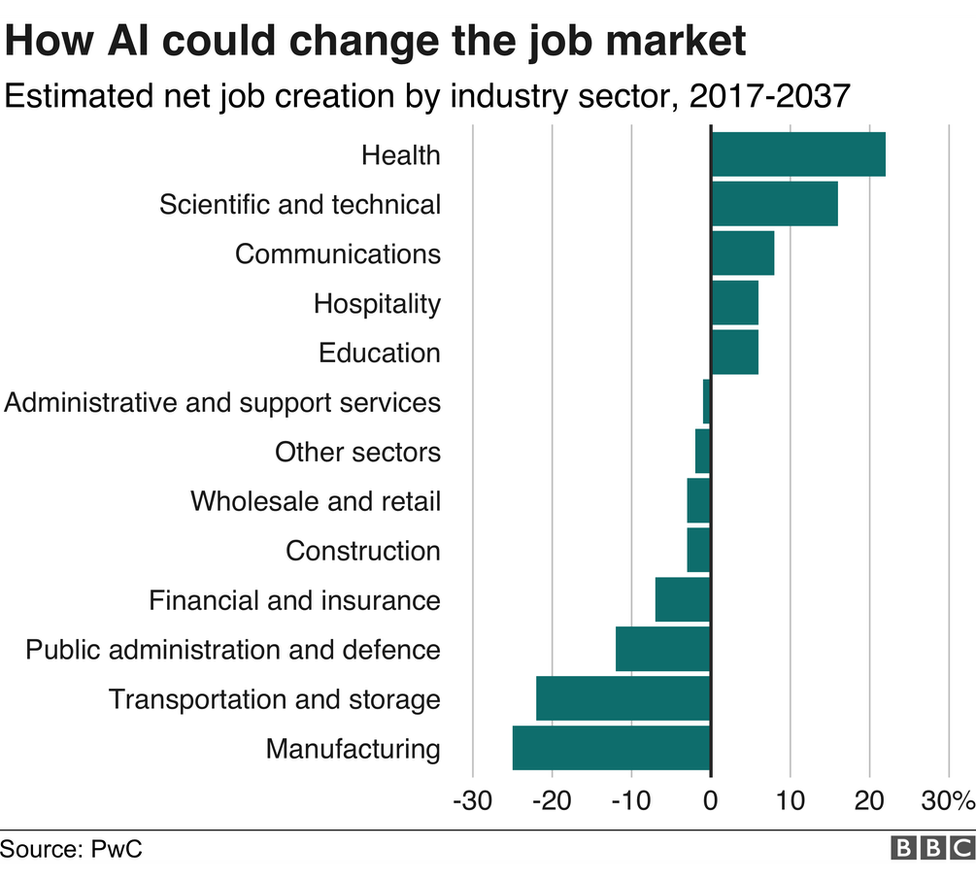The impact of AI on the labor market is becoming increasingly undeniable as we move towards 2025. Recent studies reveal that artificial intelligence is not merely a technological trend; it represents a profound shift that is reshaping employment trends across the globe. As the research details, we are witnessing a clear pattern of AI disruption in jobs, causing notable changes in various industries and affecting occupational churn and AI. The findings suggest a growing demand for highly skilled professionals while low-wage service jobs face an uncertain future. This evolving landscape underscores the importance for both workers and employers to adapt to the ongoing technology labor market changes.
Exploring the influence of artificial intelligence on employment dynamics reveals an intricate transformation of the workforce. This ongoing technological revolution is fundamentally altering how jobs are structured and viewed, prompting significant shifts in what roles are in demand and how they operate. As companies turn to innovative tools, the future of work and AI signals an era that favors those with advanced skill sets while posing challenges for unskilled labor. The recent historical analysis illustrates the need for workers to stay informed about these trends to thrive in an environment marked by rapid technological advancement. With the dawn of 2025 just around the corner, it is crucial to understand these changes and prepare for the inevitable evolution in job markets.
Understanding AI Disruption in the Labor Market
AI is increasingly recognized as a transformative force within the labor market. Research highlights that the integration of artificial intelligence into various sectors has begun reshaping job roles and employment structures significantly. Contrasting historical patterns, where technological progress led to job creation and stability, AI demands a reevaluation of employment paradigms. This disruption has created a dichotomy — on one hand, highly skilled workers are witnessing a surge in demand, while lower-skilled roles face unprecedented uncertainty.
As industries adopt AI technologies, we are observing a historical pivot from job polarization towards a more curated employment landscape, characterized by high-paid roles requiring advanced competencies. The focus has shifted towards specialized technical jobs in software development and data analysis, reflecting a crucial trend in employment that necessitates a workforce adept in STEM fields. The implications of this trend are substantial, with demand for education and training programs designed to bridge skills gaps becoming increasingly critical.
Frequently Asked Questions
How is AI disruption in jobs affecting the current labor market?
AI disruption in jobs is increasingly reshaping the labor market, introducing significant changes such as the decline of low-wage service jobs and the rise of high-skilled positions in technology sectors. Researchers have found that employment in low-wage areas has decreased since 2019, while demand for STEM jobs has surged, demonstrating a shift towards a more skills-based workforce.
What are the key employment trends for 2025 regarding AI and the labor market?
As we approach 2025, key employment trends reveal that jobs in science, technology, engineering, and mathematics (STEM) are expected to continue rising, reflecting a growing demand for technical expertise tied to AI advancements. Additionally, low-wage service roles may see continued decline, impacting traditional sectors like retail and hospitality.
What does occupational churn and AI mean for the future of work?
Occupational churn and AI signify the transformation and volatility within the labor market due to technological advancements. This concept illustrates how automation and innovations in AI are displacing traditional jobs while simultaneously creating new opportunities, particularly for high-skilled labor that can adapt to changing technologies.
How will AI impact the future of work and employment trends over the next decade?
The future of work will be heavily influenced by AI, leading to substantial changes in employment trends. Increased investments in AI technology are expected to heighten productivity and reshape job roles, favoring positions that require advanced skills. This could result in a workforce where high-skilled jobs flourish while many low-skilled positions diminish.
What types of jobs are most at risk due to AI’s influence in the labor market?
Jobs that are most at risk due to AI’s influence in the labor market include low-wage service positions and certain retail roles. As AI technologies advance, these occupations face automation and reduced demand, reflecting a broader trend of job polarization where high-skilled jobs benefit while low-skilled jobs suffer.
| Trend | Description |
|---|---|
| Job Polarization | Shift towards high-paid jobs requiring advanced skills, while low-paid job growth continues. |
| STEM Job Growth | Significant increase in STEM jobs from 6.5% to nearly 10% of labor market. |
| Decline in Low-Wage Service Jobs | Flat or decreasing employment in low-wage service jobs since 2019. |
| Retail Job Reduction | 25% decrease in retail jobs from 2013 to 2023 due to e-commerce and AI. |
Summary
The impact of AI on the labor market is profound and rapidly changing the landscape of employment. Recent studies indicate that AI is a major force reshaping job types and availability, leading to significant trends such as the polarization of jobs, a surge in STEM-related occupations, declining low-wage jobs, and substantial reductions in retail positions. These trends suggest that while certain job sectors may be improving, many traditional roles are becoming obsolete due to advancements in technology. As we move forward, it is essential for both employees and employers to adapt to these changes to thrive in an AI-driven economy.
